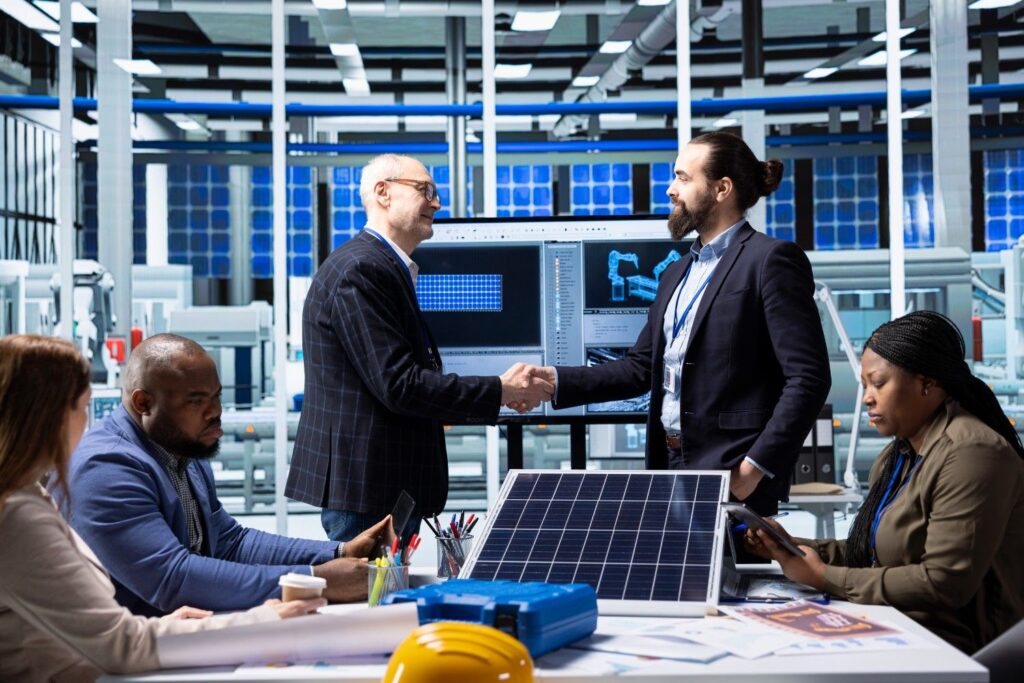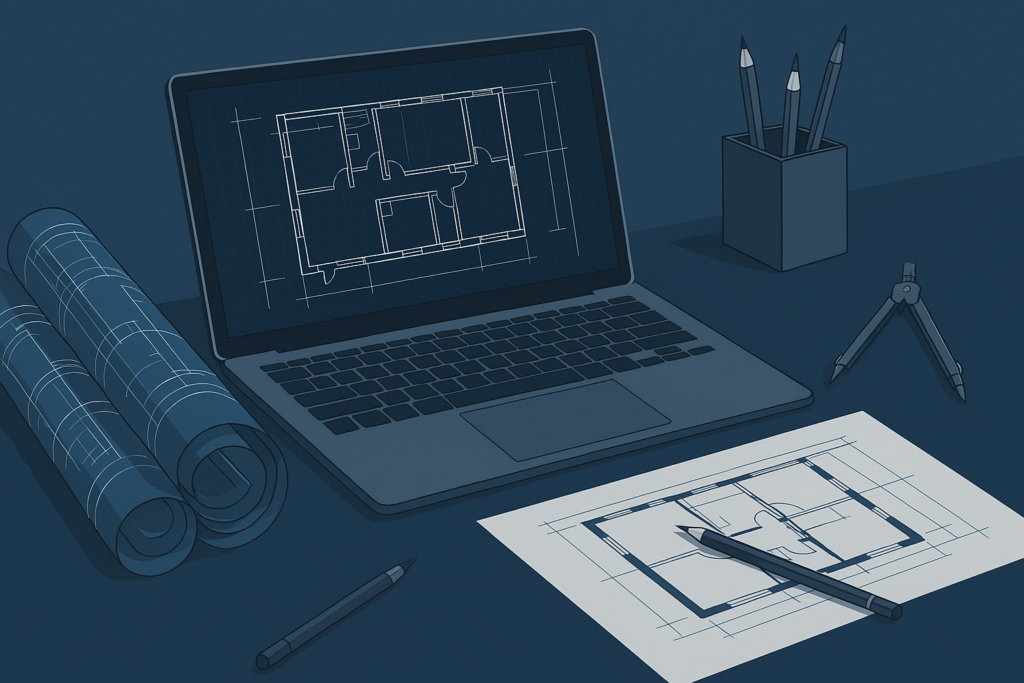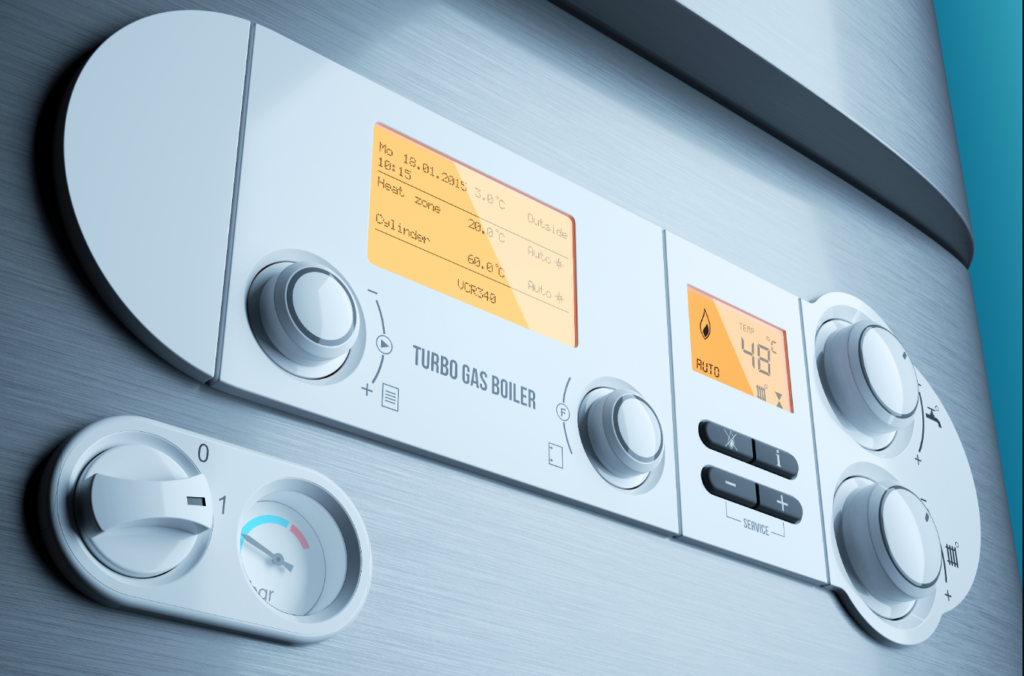Choosing the wrong commercial solar installer can turn what should be a profitable investment into a frustrating experience filled with underperforming systems, warranty disputes, and compliance headaches. The installation company you select doesn’t just put panels on your roof—they determine your system’s performance, longevity, and financial return for the next 25 years.
The commercial solar industry on the Sunshine Coast includes both exceptional professionals and operators you’d be wise to avoid. Price differences between quotes can span 40% or more, but cheap installations often cost far more in lost production, premature failures, and compliance problems than you save upfront.
This comprehensive guide arms you with the critical questions to ask potential installers—questions that separate qualified, reliable professionals from those who’ll leave you disappointed. Whether evaluating your first quote or comparing multiple proposals, these questions protect your investment and ensure you partner with an installer who delivers lasting value.
Question 1: What Accreditations and Certifications Do You Hold?
The foundation of installer evaluation starts with credentials. Commercial solar installation requires specific qualifications that protect you from substandard work and ensure regulatory compliance.
Clean Energy Council (CEC) accreditation is non-negotiable. Only CEC-accredited installers can legally install systems eligible for Small-scale Technology Certificates—worth $10,000–$20,000 on typical commercial projects. Ask for CEC accreditation numbers and verify them at cleanenergycouncil.org.au.
Specifically request proof of Commercial Grid-Connect accreditation, not just residential credentials. Commercial installations involve different technical requirements, safety considerations, and compliance obligations. An installer with only residential accreditation lacks the training for commercial projects.
Electrical licensing is equally critical. In Queensland, solar installation requires licensed electricians. Ask what licensed electricians will work on your project (not just whether the company “has” licensed staff) and request license numbers for verification through the Electrical Safety Office Queensland.
Additional valuable credentials include:
- Master Electricians Australia membership
- Solar Accreditation Australia certification
- Local business registration and ABN verification
- Trade insurance and liability coverage ($10–$20 million minimum)
Don’t just ask about credentials—request documentation and verify independently. Unscrupulous operators sometimes claim accreditations they don’t hold or use expired certifications.
Question 2: How Many Commercial Projects Have You Completed on the Sunshine Coast?
Local experience matters enormously in commercial solar. Sunshine Coast-specific knowledge about Energex requirements, local regulations, typical roof types, weather considerations, and supplier relationships directly impacts project success.
Request specific numbers: “How many commercial installations have you completed in the past 12–24 months?” Vague answers like “dozens” or “many” warrant follow-up. Experienced installers should readily provide approximate project counts.
Ask for local references you can contact. Three to five similar-sized projects in nearby locations let you verify installer claims. Speak with references about timeline accuracy, communication quality, post-installation support, and whether systems perform as promised.
Project portfolio diversity demonstrates capability. An installer who’s completed warehouses, retail spaces, manufacturing facilities, and office buildings brings broader experience than one focused on a single building type. Your specific facility might present unique challenges—experience with varied projects suggests adaptability.
System size relevance deserves attention. An installer who’s completed dozens of residential 10kW systems may struggle with a 150kW commercial project. The technical complexity, equipment differences, and regulatory requirements differ substantially. Ensure their experience matches your project scale.
Site visits to completed projects (with permission) reveal workmanship quality. Observe cable management, mounting hardware installation, conduit routing, and overall system presentation. Professional installations look clean, organized, and purpose-built—not like afterthoughts with exposed wiring and haphazard mounting.
Question 3: What Equipment Brands Do You Use, and Why?
Equipment quality determines your system’s performance, reliability, and longevity. The Sunshine Coast’s subtropical climate demands specific equipment characteristics: heat tolerance, humidity resistance, and corrosion protection from salt air.
Solar panel brands vary dramatically in quality. Tier 1 manufacturers like Canadian Solar, Jinko, Trina, and LONGi produce reliable panels with strong warranty backing and proven longevity. Lesser-known brands might offer lower prices but risk premature failure and worthless warranties if manufacturers exit the market.
Ask specifically: “What tier rating do your panels carry?” Tier 1 manufacturers meet criteria including bankability, automated production, research investment, and financial stability. This classification matters—it predicts whether warranty claims will be honored in 15 years.
Inverter selection significantly impacts system reliability and monitoring capabilities. Leading commercial inverter brands include Fronius, SMA, Sungrow, and Huawei. Each offers different features, warranty terms, and price points. Your installer should explain why they recommend specific models for your application.
Beware of installers pushing obscure equipment brands. Questions to ask include:
- “How long has this manufacturer been in business?”
- “What warranty support infrastructure exists in Australia?”
- “Have you installed this equipment previously? What’s been your experience with reliability and warranty claims?”
Australian Standards compliance is mandatory. All equipment must carry appropriate certifications (AS/NZS standards) for legal installation. Non-compliant equipment voids insurance, creates safety risks, and may require removal at your expense.
Request detailed equipment specifications in writing before committing. Verbal promises about “premium panels” or “top-quality inverters” are meaningless—get model numbers, warranty terms, and performance specifications documented.
Question 4: What Warranty Coverage Does Your Installation Include?
Warranties protect your investment when equipment fails or installation defects appear. Commercial solar systems include multiple overlapping warranties covering different components and issues—understanding what’s actually covered prevents future disputes.
Panel performance warranties typically guarantee 80–85% of original output after 25 years. Linear warranties (gradual degradation allowances) offer better protection than step warranties (sudden drops after certain years). Ask for warranty documentation before signing contracts.
Panel product warranties cover manufacturing defects for 10–15 years. This separate coverage handles physical failures—cracked cells, delamination, junction box failures—distinct from performance guarantees.
Inverter warranties usually provide 5–10 years of coverage. Some manufacturers offer extended warranty options for purchase. Clarify whether the quoted price includes extended inverter warranties or if standard coverage applies.
Installation workmanship warranties from your installer cover labor, mounting, electrical work, and roof waterproofing. This should span at least 5–10 years. Ask specifically:
- “What does your workmanship warranty cover, and what exclusions exist?”
- “If warranty work is required, what’s your response timeframe?”
- “If your company closes, how are warranties honored?”
Warranty claim processes reveal reliability. Ask about their warranty claim history: “How many warranty claims have you processed in the past year, and what was typical resolution time?” Companies confident in their workmanship answer readily. Evasive responses suggest potential problems.
Insurance-backed warranties provide additional protection. Some installers carry insurance specifically covering workmanship warranties if their company ceases operations—valuable security for long-term coverage.
Question 5: How Do You Size Systems and What’s Your Design Process?
Proper system sizing separates great installations from disappointing ones. Undersized systems leave savings on the table; oversized systems waste capital on unused generation capacity.
Comprehensive energy audits should precede system design. Your installer needs detailed consumption data: 12 months of electricity bills, interval meter data showing hourly usage patterns, and understanding of planned business changes affecting future consumption.
Ask: “How do you analyze consumption patterns to determine optimal system size?” Strong answers involve:
- Detailed bill analysis showing seasonal variations
- Interval data review identifying peak consumption windows
- Daytime vs. evening consumption breakdown
- Discussion of future expansion plans or operational changes
Site assessment thoroughness impacts design quality. Installers should physically inspect your facility before quoting, evaluating:
- Roof condition, type, pitch, and orientation
- Shading analysis (trees, neighboring buildings, equipment)
- Electrical infrastructure capacity and upgrade requirements
- Suitable mounting locations and access challenges
- Structural engineering requirements for load-bearing
Beware of installers providing quotes without visiting your site. Accurate system design requires physical assessment—remote quoting often misses critical factors affecting installation cost and system performance.
Modeling software helps predict system performance. Ask what design tools they use (programs like PVsyst, Helioscope, or Aurora) and request performance modeling reports showing expected monthly and annual generation.
Question 6: What Is Your Installation Timeline and Process?
Understanding project timeline and methodology helps you plan around potential disruptions and sets realistic expectations.
Typical commercial solar installations on the Sunshine Coast follow this timeline:
- Design and approvals: 2–4 weeks
- Equipment procurement: 3–6 weeks
- Physical installation: 3–10 days depending on size
- Grid connection and commissioning: 1–2 weeks
Ask: “What’s your current lead time from contract signing to system activation?” Installers with months-long backlogs might delay your project, costing you savings while you wait. Conversely, installers available immediately may lack sufficient work—potentially a warning sign.
Project management deserves attention. Clarify:
- “Who’s my primary contact during the project?”
- “How do you communicate progress and handle unexpected issues?”
- “What disruption should we expect to normal business operations?”
Most commercial installations proceed with minimal operational disruption—work occurs primarily on rooftops or external areas. However, electrical shutdowns for connection work typically require 2–4 hours of downtime. Plan accordingly.
Weather contingencies matter on the Sunshine Coast. Summer storms can delay roof work. Ask about their approach to weather delays and timeline adjustments.
Question 7: How Do You Handle Energex Compliance and Grid Connection?
Navigating Energex requirements, export limitations, and grid connection approvals represents one of the most complex aspects of commercial solar installation. Your installer must demonstrate thorough knowledge of current regulations.
Ask: “What’s your experience with Energex applications, and what’s your typical approval timeline?” Experienced installers maintain relationships with Energex and understand current requirements, expediting approvals.
Export limitations significantly impact commercial solar economics. Energex restricts how much solar generation you can export to the grid, with limits varying by location and transformer capacity. Ask:
- “What export limit applies to my site?”
- “How do you design systems to maximize self-consumption within export limits?”
- “Can battery storage or consumption management help optimize the system within Energex constraints?”
Installers should conduct preliminary Energex inquiries before final system design, ensuring proposed capacity aligns with grid connection capabilities.
Application management should be installer responsibility. Verify they handle all paperwork: Energex connection applications, council approvals, electrical safety certifications, and compliance documentation. You shouldn’t need to chase approvals yourself.
Question 8: What Financing Options Are Available?
Understanding financing approaches helps optimize cash flow and tax treatment of your solar investment.
Common financing structures include:
- Outright purchase (best long-term return, highest upfront cost)
- Equipment finance/loans (spreads cost over 3–7 years)
- Power Purchase Agreements (no upfront cost, lower total savings)
- Operating leases (potential tax advantages for some businesses)
Ask: “What financing partners do you work with, and what rates/terms are currently available?” Established installers maintain relationships with equipment financiers offering competitive rates (typically 5–8% for commercial solar).
Tax treatment significantly impacts net investment costs. Discuss instant asset write-off eligibility with your accountant and confirm your installer provides documentation supporting tax claims.
Solar-specific financing typically offers better terms than general business loans because solar installations are predictable, revenue-generating assets with 25-year lifespans. The system itself often secures the financing.
Question 9: What Post-Installation Support and Monitoring Do You Provide?
Installation day is the beginning of your relationship with your solar provider, not the end. Support quality after commissioning separates excellent installers from disappointing ones.
Monitoring systems should include:
- Real-time generation tracking via phone app or web portal
- Automatic alerting when issues arise
- Historical data for performance analysis
- Production guarantees or at least performance expectations
Ask: “What monitoring system is included, and what are ongoing subscription costs?” Some installers include lifetime monitoring; others charge annual fees ($100–$300).
Maintenance support availability matters. Questions include:
- “Do you offer maintenance contracts, and what do they cover?”
- “What’s your response time when problems arise?”
- “Do you provide performance guarantees and remediation if systems underperform?”
Local service capacity is crucial. A mainland-based installer without Sunshine Coast service technicians may struggle to address issues promptly. Confirm they have local staff or established partnerships for ongoing support.
Question 10: Can You Provide a Detailed, Written Quote Breaking Down All Costs?
Transparency in pricing protects you from unexpected expenses and enables meaningful quote comparison.
Comprehensive quotes should itemize:
- Equipment costs (panels, inverters, mounting, cables)
- Installation labor charges
- Electrical work and grid connection fees
- Permits, approvals, and compliance costs
- Monitoring system and subscription fees
- Warranty coverage details
- Payment schedule and terms
Beware of vague “all-inclusive” prices without component breakdowns. Detailed quotes let you compare equipment quality between installers—a $50,000 quote using premium equipment may offer better value than a $45,000 quote with inferior components.
Exclusions matter as much as inclusions. Clarify:
- “Does the quote include all electrical upgrades required?”
- “Are roof repairs or reinforcement included if needed?”
- “What circumstances might increase the quoted price?”
Payment terms deserve scrutiny. Typical structures involve deposits (10–30%), progress payments during installation (30–50%), and final payment upon commissioning (20–40%). Avoid installers demanding full payment upfront—this creates risk if they don’t complete work properly.
Conclusion
Hiring the right commercial solar installer protects your investment and ensures 25 years of reliable, profitable operation. The questions in this guide help you evaluate credentials, experience, equipment quality, warranty coverage, and support capabilities systematically.
Don’t rush this decision. Obtain multiple quotes, check references, verify credentials, and trust your instincts. Professional installers answer questions confidently and provide documentation readily. Evasiveness or pushiness during the sales process often predicts problems after installation.
The commercial solar investment delivers exceptional returns when installed properly by qualified professionals. Investing time in installer selection ensures you partner with a company that will deliver outstanding results and stand behind their work for decades to come.
Ready to find an installer who meets these high standards? The right questions reveal whether an installer has the expertise, integrity, and capability to execute your commercial solar project flawlessly.
Halcol Energy welcomes detailed questions from prospective clients, providing transparent answers backed by proven experience across hundreds of Sunshine Coast commercial installations.
FAQ Section
What’s the most important question to ask a commercial solar installer?
Request proof of Clean Energy Council commercial grid-connect accreditation and Queensland electrical licensing. These credentials are mandatory for legal, compliant installations and ensure access to government incentives worth thousands of dollars. Always verify credentials independently.
How many quotes should I get for commercial solar?
Obtain 3–4 detailed quotes from qualified installers. This provides pricing comparison while revealing differences in equipment quality, warranty coverage, and service approaches. Avoid choosing based solely on price—cheapest quotes often indicate inferior equipment or inexperienced installers.
Should I choose a local Sunshine Coast installer or a larger company?
Local installers offer advantages: faster response times for service, understanding of Sunshine Coast-specific requirements, and established relationships with Energex and local authorities. However, some large companies also maintain strong local presences. Prioritize proven local experience over company size.
What warranty coverage is standard for commercial solar?
Expect 25-year panel performance warranties, 10–15 year panel product warranties, 5–10 year inverter warranties, and 5–10 year installer workmanship warranties. Anything less suggests substandard equipment or limited confidence in installation quality.
How can I verify an installer’s claims about past projects?
Request contact information for 3–5 recent commercial clients with similar-sized systems. Verify CEC accreditation and electrical licenses through official databases. Check online reviews and company history through ASIC business registry. Site visits to completed projects (with permission) reveal workmanship quality.



